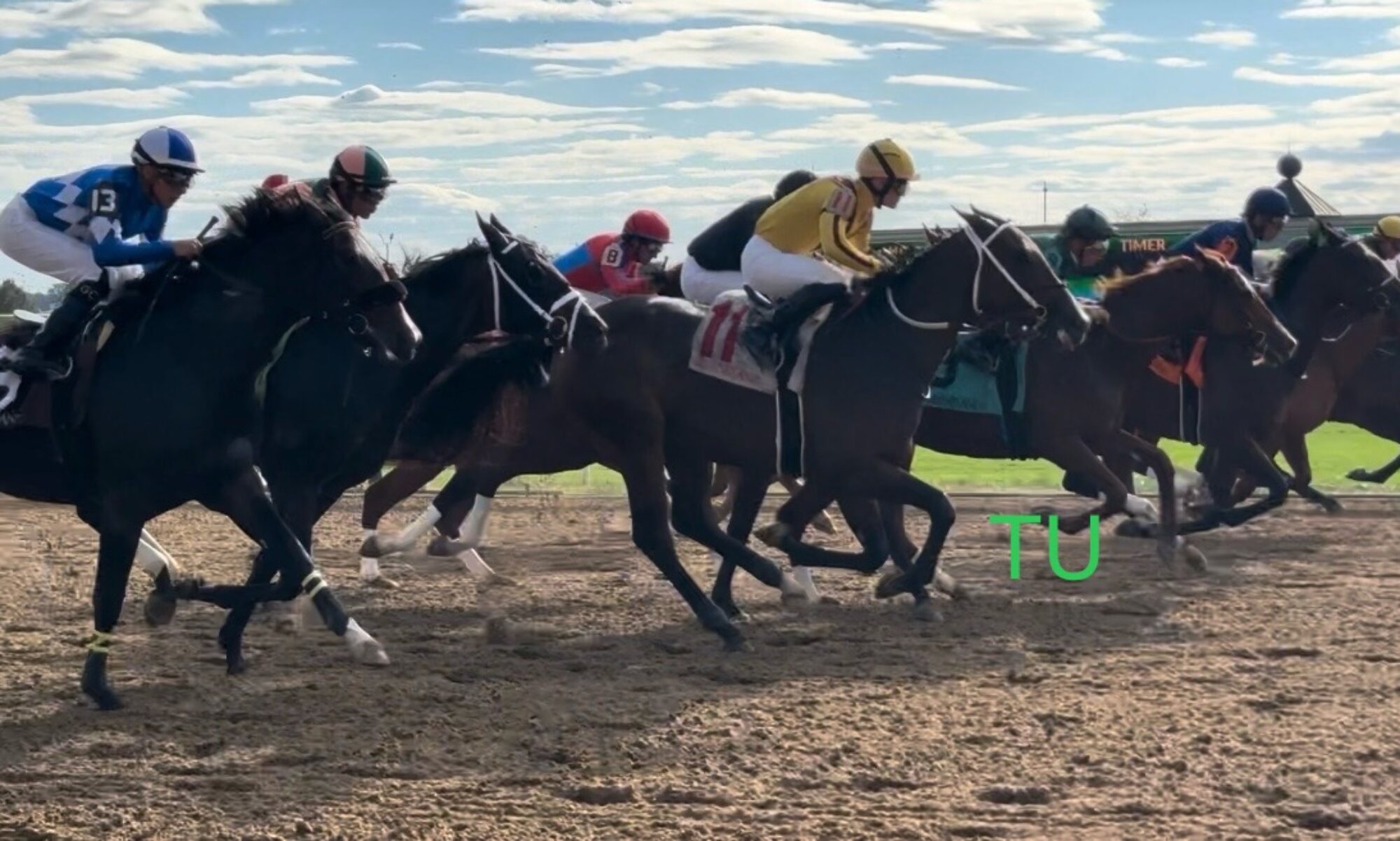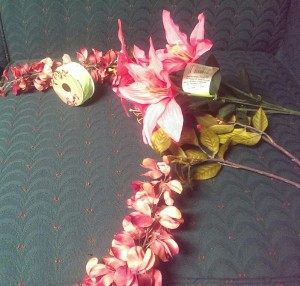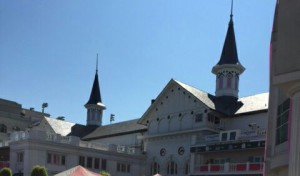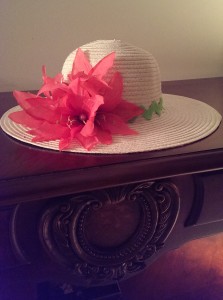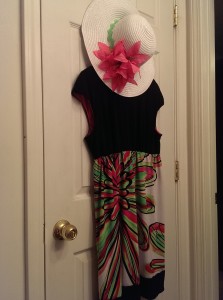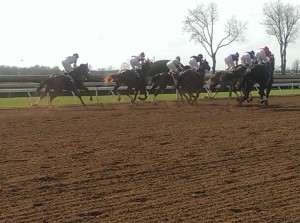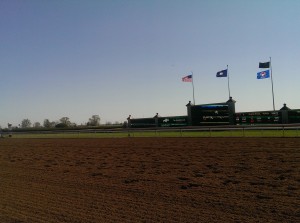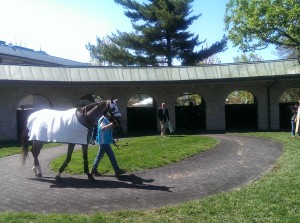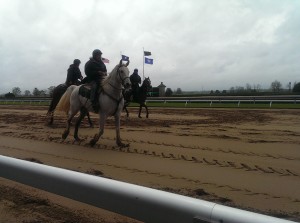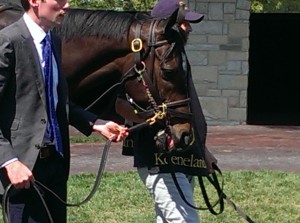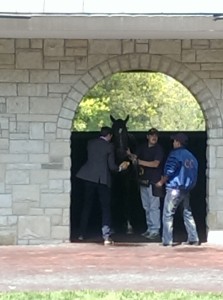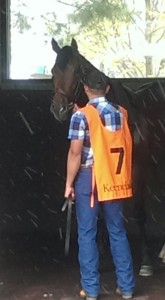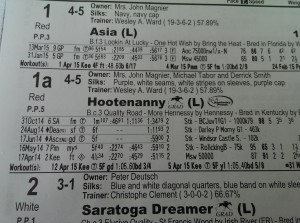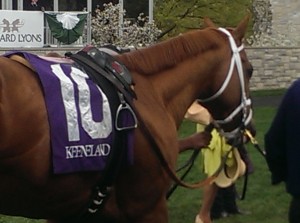Final Update: American Pharoah for the win, Firing Line in 2nd, and Dortmund in 3rd
UPDATE! International Star just scratched.
I should be sleeping, but I’m blogging. I’m too excited for rest anyway. Tomorrow, Saturday May 2, 2015 at 6:34 p.m. EST is the 141st running of the Kentucky Derby! I wavered on my pick for the Oaks, she showed, but tomorrow it is time to seize the day. I have my sights set on Carpe Diem, he has been my favorite for a long time. Before I get ahead of myself, we need to explore the history, traditions, contenders, and keep it fun.
The Kentucky Derby was ran at Churchill Downs in Louisville, Kentucky for the first time in 1875. It is the only race in the Triple Crown that has run consecutively since its beginning. It is also the youngest of the 3 races. The Preakness started in 1867 and took time off from 1891 to 1893. The Belmont began in 1873 but took a break from 1911 to 1912. The first Triple Crown winner, Sir Barton, ran in 1919.
The Derby is also called The Run for the Roses. The winning horse has received a garland of roses since 1896. The drink of choice is the distinctive, but not delicious, Mint Julep, consisting of bourbon and crushed mint, like booze and toothpaste, yuk. The pie, named for the day, is quite yummy and when I start making You Tube videos I am going to share my version with you. I plan to start the You Tube thing soon as I just got a book on it. The song, of course is, “My Old Kentucky Home”. The fastest Derby horse ever clocked was Secretariat in 1971. Only one other horse has beat the 2 minute mark. That happened in 2001 with Monarchos. This race is 1 and 1/4 miles (10 furlongs) on the dirt. It will be the 11th race of the day at Churchill. The purse is 2 million dollars. There will be 4 trophies issued. A gold trophy goes to the winner and a silver one for each the jockey, trainer, and owner. The side depicts a horseshoe and the top has a mounted horse. Don’t forget the hats. Ladies, be creative. Spend big, make a fashion statement, or make your own hat. Be on the lookout for markdown hats in the Fall and Winter then custom design your hat to match your dress, with a stop at your favorite hobby shop. Go from drab to fab if your mom is good with a glue gun, wire cutters and thread.
Finally, lets get to the horses! Listed by post position the Derby will feature:
- Ocho Ocho Ocho
- Carpe Diem
- Materiality
- Tencendur
- Danzig Moon
- Mubtaahij
- scratch
- Dortmund
- Bolo
- Firing Line
- scratch
- scratch
- Itsaknockout
- Keen Ice
- Frosted
- War Story
- Mr. Z.
- American Pharoah
- Upstart
- Far Right
- Frammento
American Pharoah is the favorite. He lost his first start but has not been defeated since, he is a speed horse but he has to cut to the rail from a great deal away. He is the reining juvenile champion. He is owned by Zayat Stables just as Mr. Z is. They are running side by side and he is also a speed horse. They do have different trainers, the 1st is Bob Baffert ,who took all of his fillies out of the Oaks, and the later is D. Wayne Lukas.
Dortmund is the 2nd favorite. He is sired by 2008 Derby winner Big Brown. He has the experience of 6 races including this very track where he won by over 7 lengths. He is running undefeated, as is Materiality. Only 7 undefeated horses have ever won the Derby. Dortmund is trained by Baffert, as is the favorite. He is also a fan of the speed. I like his position better too. He is one of 3 California horses in the race, including Firing Line and Bolo. Firing Line is also known for speed and finished close 2nd twice to Dortmond but also set a track record for 1 and 1/8 miles at the Sunland Derby of just 1 minute and 47 seconds. He is a steady runner. Bolo, has finished third to Dortmund twice this year.
Carpe Diem and Materiality also have to come out side by side under the same trainer, Todd Pletcher, but are owned by separate groups. Both speed horses they have to be careful not to get in each others way. Carpe Diem has won 4 of 5 races and was 2nd only in the Breeders’ Cup Juvenile, he has shown a lot of versatility in his races. Danzig Moon trailed him at 2nd place in the Bluegrass Stakes. Materiality was the winner of the Florida Derby.
Ocho Ocho Ocho will also speed early. He is sired by 2007 Derby winner, Street Sence. He is right on the rail, so that should get him out in front but I do not think he can keep up the pace for the duration. Far Right isn’t as far out to the right as he was positioned before Pletcher scratched a third horse, and yet another last minute scratch. He is a deep closer, perhaps the strongest closer, so he can probably handle his position. He has run second to American Pharaoh and will benefit from this race being a bit longer. International Star and Keen Ice are closers too. Keen Ice has run third to International Star and looks to be a longshot. He is owned by the lovely Irish, Donegal Racing. International Star is so experienced with 20 to 1 wins. He is sired by 2000 Derby winer, Fusaichi Pegasus. He won the Louisiana Derby. He is owned by Ken and Sarah Ramsey, the winningest owners at both Churchill and Keeneland. Frammento was added in when Pletcher pulled a horse out. He has no stakes wins this year. He does have the experienced and derby winning Nick Zito for a trainer.
Frosted could be a pleasant surprise. He had surgery recently to improve his breathing and he is trained by Kiaran McLaughlin who is no newbie to the Derby or major racing. He has the same odds as Upstart, who ran second in the Florida Derby to Materiality.
Other long shots include Tencendur, Itsaknockout, and War Story. Tencendur runs with the pace. Itsaknockout lacks experience and was fourth by a distance in the Florida Derby. International Star has beat out War Story, also a closer, 3 times.
Mubtaahij may have done the best job of staying off the radar. No Middle East horses have won the Derby yet but he has a fighting chance. He is in a good post position. He has talent and won the United Arab Emirates Derby. This will be his first race in the United States.
I gave you my pick. My tipster opted out of a tip, this time, but shared a lot of materials. Two of my experienced and winning friends volunteered their favorite horse for this Derby. They say, go with Firing Line, with Mr. Prospector and Raise a Native on both sides of the pedigree. Looking at recent Derby winners, and his loss by a nose to Dortmund, after a bump, and again by just a nose, to the same, he is ready to win. In his last start he won by over 14 lengths! One winning Derby horse since 2010 has defaulted by this bloodline. That amazing freak of nature was Animal Kingdom in 2010.
As for the fun… I hope everyone does something special to enjoy the Kentucky Derby. Keeneland is hosting the world’s largest party and that is where I will be. Whatever you do, seize the day! Please, follow me on Twitter and Facebook, also ThoroughbredU. Go Carpe Diem! I leave you with 2 great songs:
Share This: